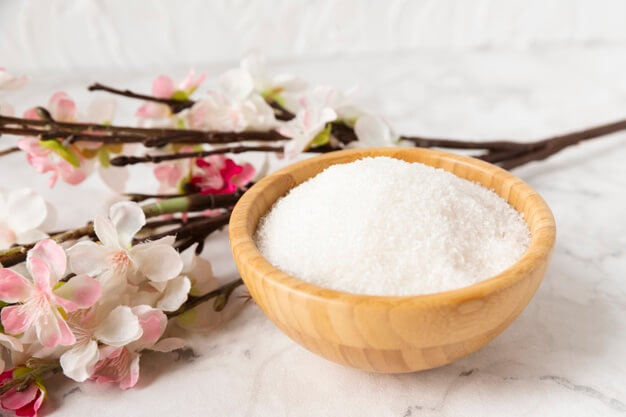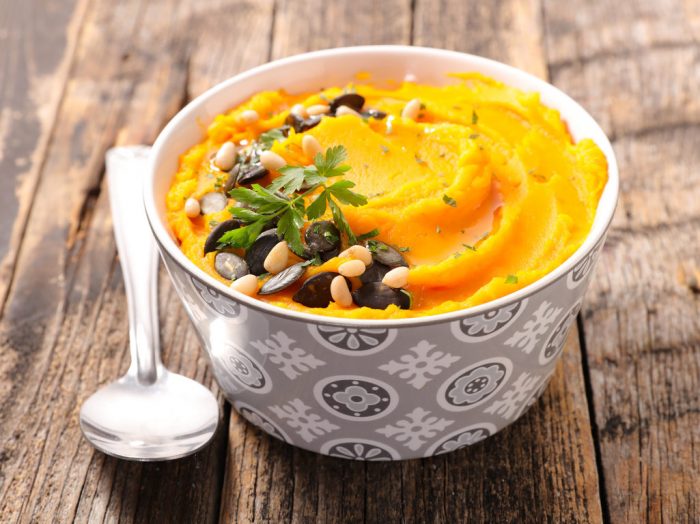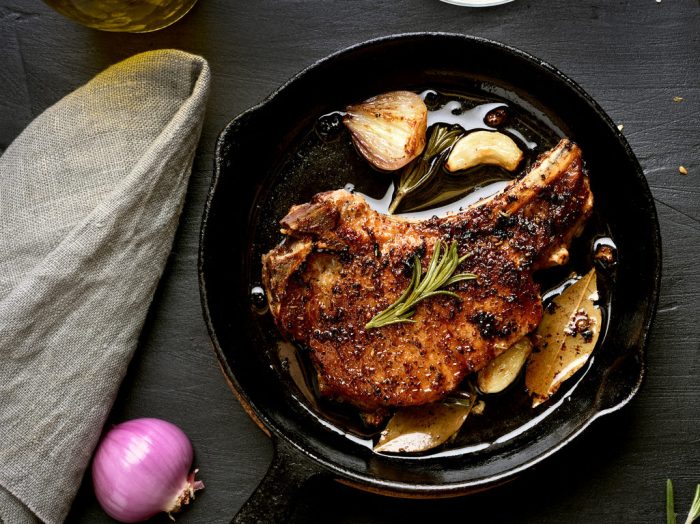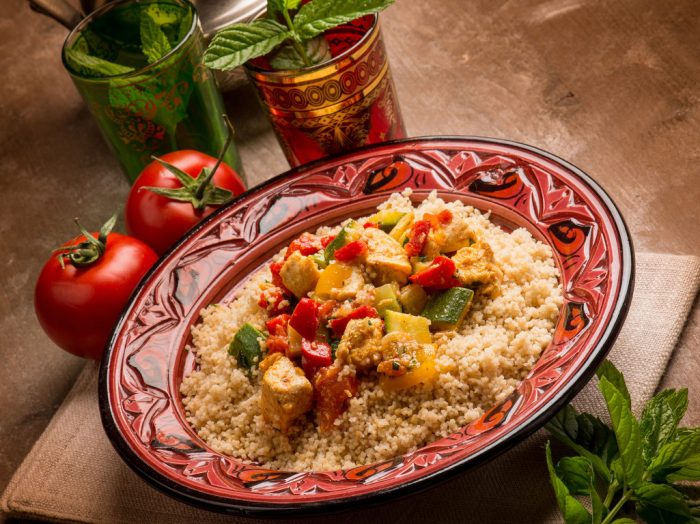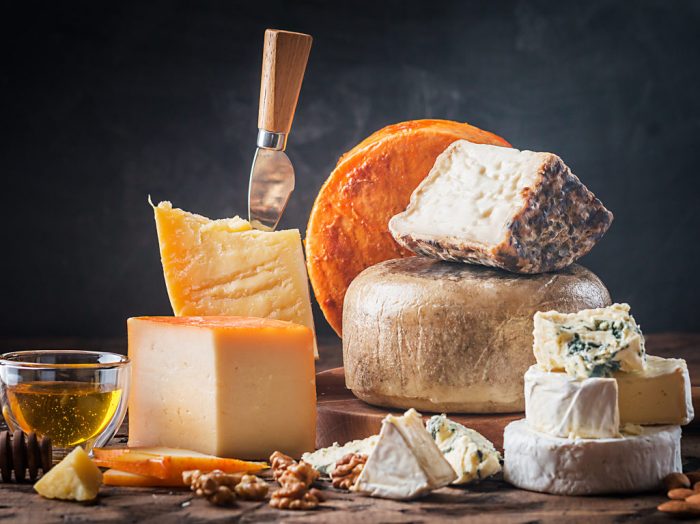Can you imagine a world where there is no salt? This particular spice adds more flavor to both sweet and salty dishes, even if we are not always aware of its importance.
One of the downsides regarding salt is that we are so accustomed with the common variety, that we ignore the rest of the salt types out there, or consider them too complicate to choose.
Well, we hope our guide below will shed some light on this matter! Here are some of the most important types of salt available and what dishes they suit best:
1. Table Salt
Obtained from salt deposits found underground, this is a highly refined and finely grounded salt. All impurities and trace minerals are eliminated in the process. To prevent it from clumping, it is treated with anti-caking agent.
Most of it contains iodine in order to prevent iodine deficiency in humans, which can cause hypothyroidism or other maladies.
Versatile and cheap, it is found in every household and kitchen.
2. Sea Salt
A largely familiar type of salt used in the kitchen, the sea salt is harvested from evaporated seawater, it is unrefined and coarser-grained than table salt. It is packed with minerals such as potassium, iron and zinc, which gives it a more complex flavor profile. There are no limitation to which types of foods you can use it with.
3. Himalayan Pink Salt
This pink salt contains 84 natural minerals and elements found in the human body, so it is understandable why it is so frequently used in spa treatments or in the kitchen. Ideal for cooking or as a finishing salt, it is pretty much used for any type of dish you’d want to prepare. After all, it is the purest form of salt in the world, right?
4. Kosher Salt
A little bit more flakier and coarser-grained than the regular table salt, the Kosher salt is perfect to sprinkle on top of meat. Since it dissolves so quickly, consider it an all-purpose cooking salt. Most of it does not have added iodine and only rarely is treated with anti-caking agents.
5. Celtic Sea Salt
Harvested from the tidal ponds off the coast of France, this salt has a mineral-rich content, which gives it a gray hue, a briny taste and its well-known moisture. It is perfect for baking, fish dishes, and also for oven-baked root vegetables.
6. Fleur de Sel
It literally means “flower of salt”, you guessed correctly. This type of salt is hand-harvested from the tidal pools off the coast of Brittany, in France. The salt crystals are drawn from the surface of the water very gentle, mostly on sunny, dry days and using only traditional wooden rakes.
It is an expensive salt that goes by the nickname “the caviar of salts”. The perfect usage for this blue-grey salt, with high mineral content? For meat, seafood, vegetables, or sweets based on chocolate or caramel.
7. Flake Salt
Thin and irregularly shaped, this type of salt is harvested from water through evaporation or boiling. It has a very low mineral content, the flakes can dissolve quickly and you can use it to finish dishes based on meat.
8. Kala Namak Salt
This is a Himalayan salt packed in a jar along with herbs, seeds, bark and charcoal. The mixture is then burned in a furnace for precisely 24 hours. Afterwards, it is cooled, stored and aged, resulting in a reddish-black colored salt, with a faint, sulfurous aroma of eggs.
The Kala Namak salt is perfect for vegan and vegetarian dishes, especially if you want to add the taste of egg on egg-free dishes.
9. Pickling Salt
You figured it out – this salt is excellent for pickling and brining, because it does not contain any added iodine or anti-caking agents. It also has few trace minerals of sea salt, “guilty” for discoloring the preserved food.
10. Smoked Salt
Use this type of salt if you want to add a smoky and intense flavor to your dishes, especially if it contains meat or heartier vegetables, such as potatoes. The taste will vary depending on the time smoked and the wood used.
11. Black Hawaiian salt
This salt is harvested from the volcanic islands of Hawaii. The dark color is so deep due to the activated charcoal added. You can use this salt to prepare pork and seafood dishes.
12. Red Hawaiian Salt
It is also known as “alaea salt”. As you’ve probably guessed, the name comes from the reddish, iron-rich volcanic clay alaea. It is an unrefined salt and also great to use in the kitchen, adding a robust flavor to any meat or seafood dish.
13. Flavored salt
Wondering what flavor a salt can have? Well, let’s say lemon, flavored herbs or truffle taste. Truffle salt is usually used for risotto or in red meat dishes, while the lemon flavored salt is used to make cocktails or bake vegetables on grill.
Of course, the list is not over yet, there are also other exotic salts out there for you to experience.
Just to name a few more: Cyprus Black Lava Salt, Gray Salt, and other regional salts, such as:
- Persian Blue Diamond Salt
- Kona deep water sea salt
- Alaska flake sea salt
- New Zealand Lake Grassmere salt
- Korean sogeum salt
- Sal de Gusano
- Antarctic sea salt
We hope our guide was useful. Don’t forget to tell us what salt you use more frequently and what other varieties from our list you’ll try from now on.

